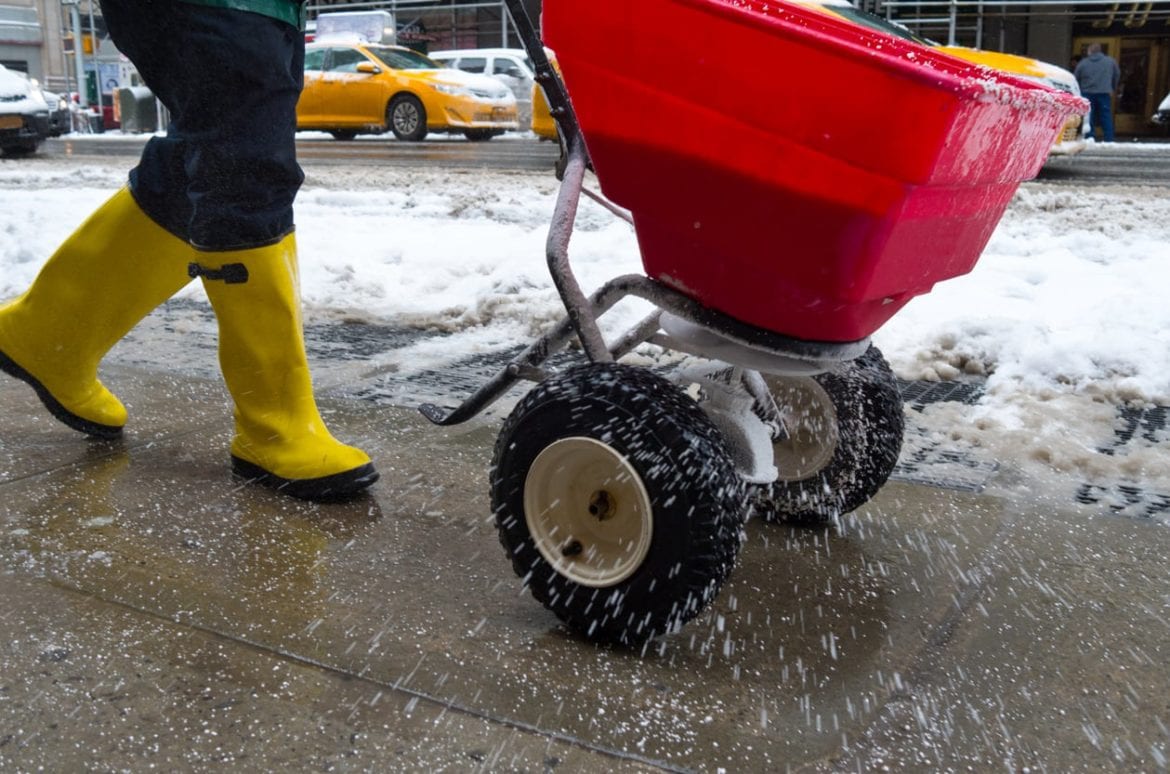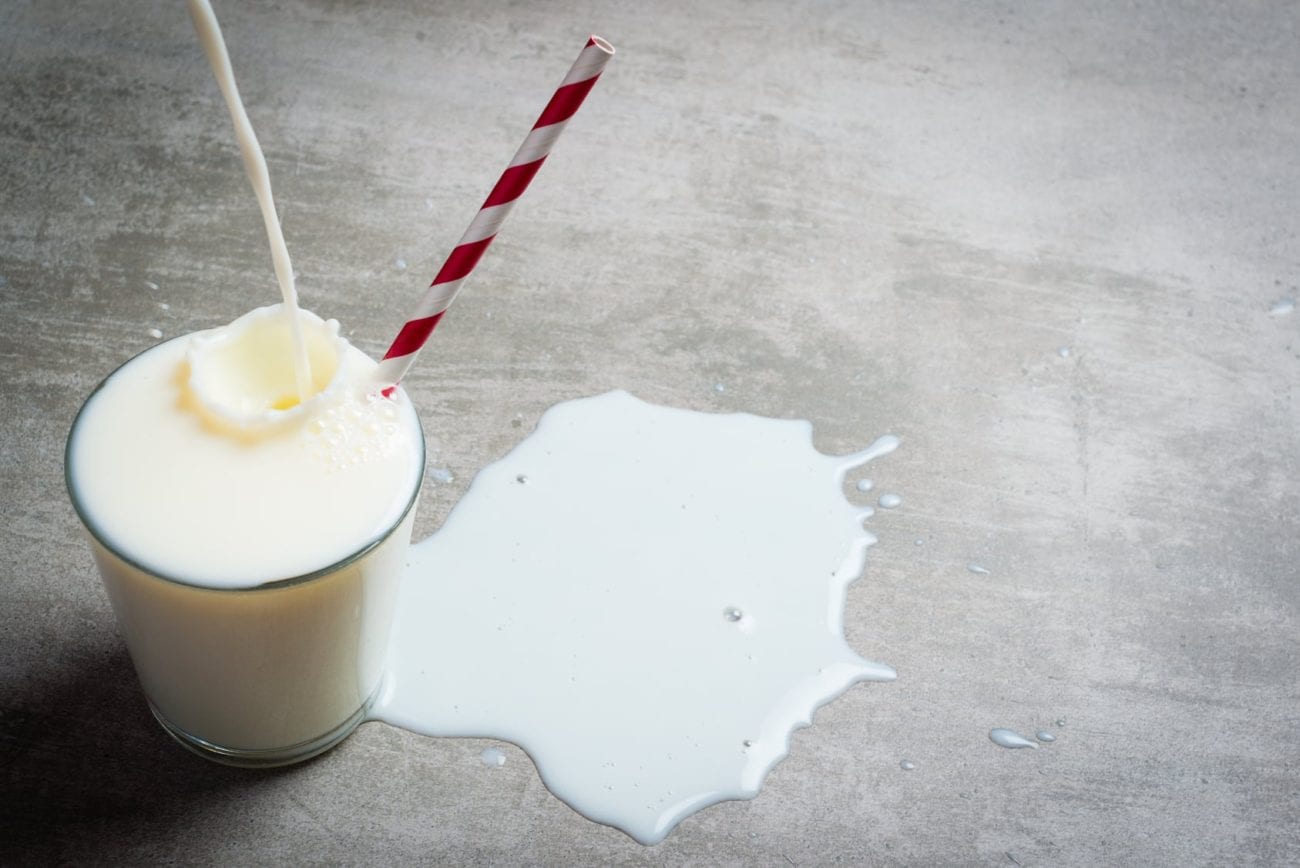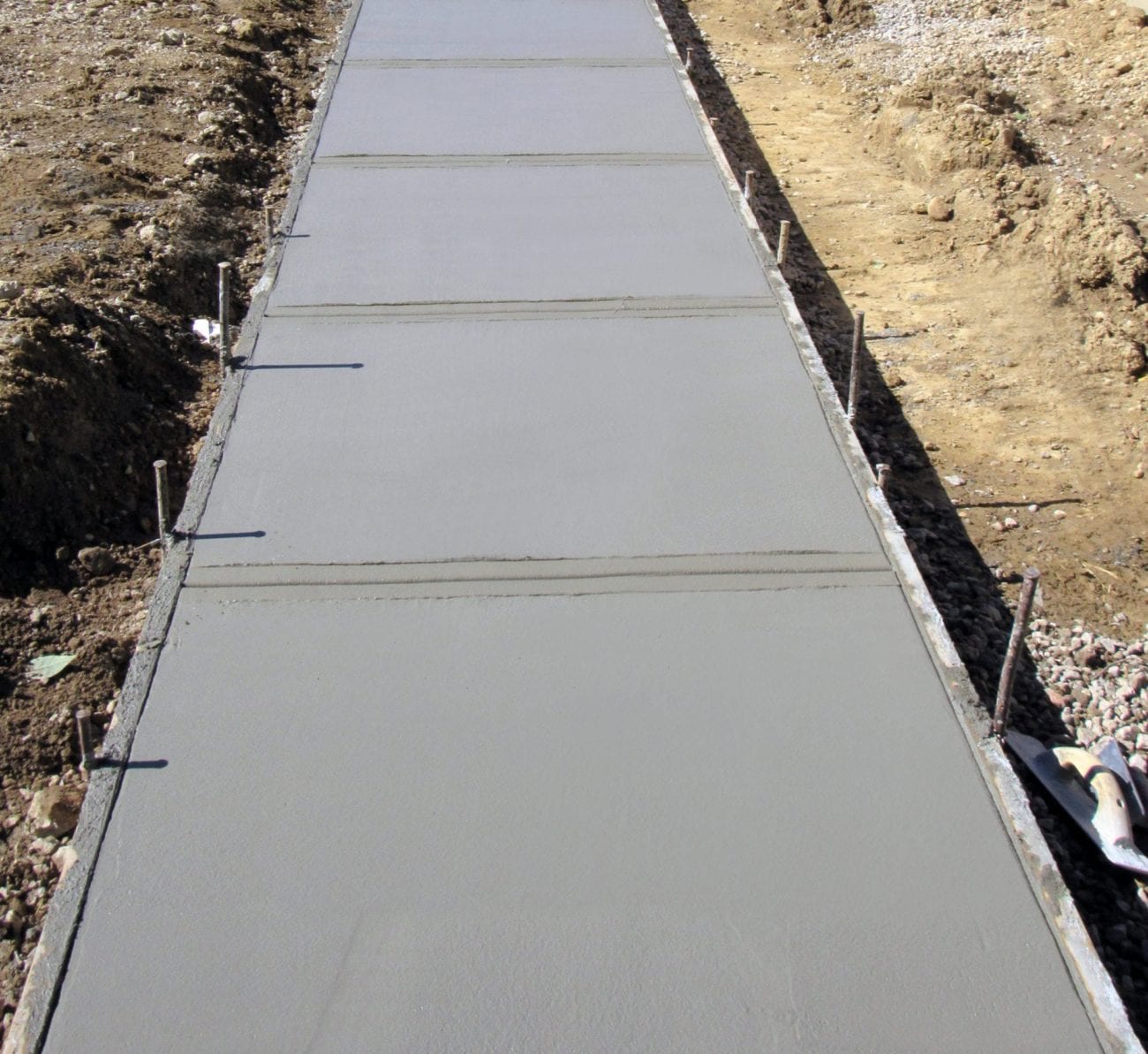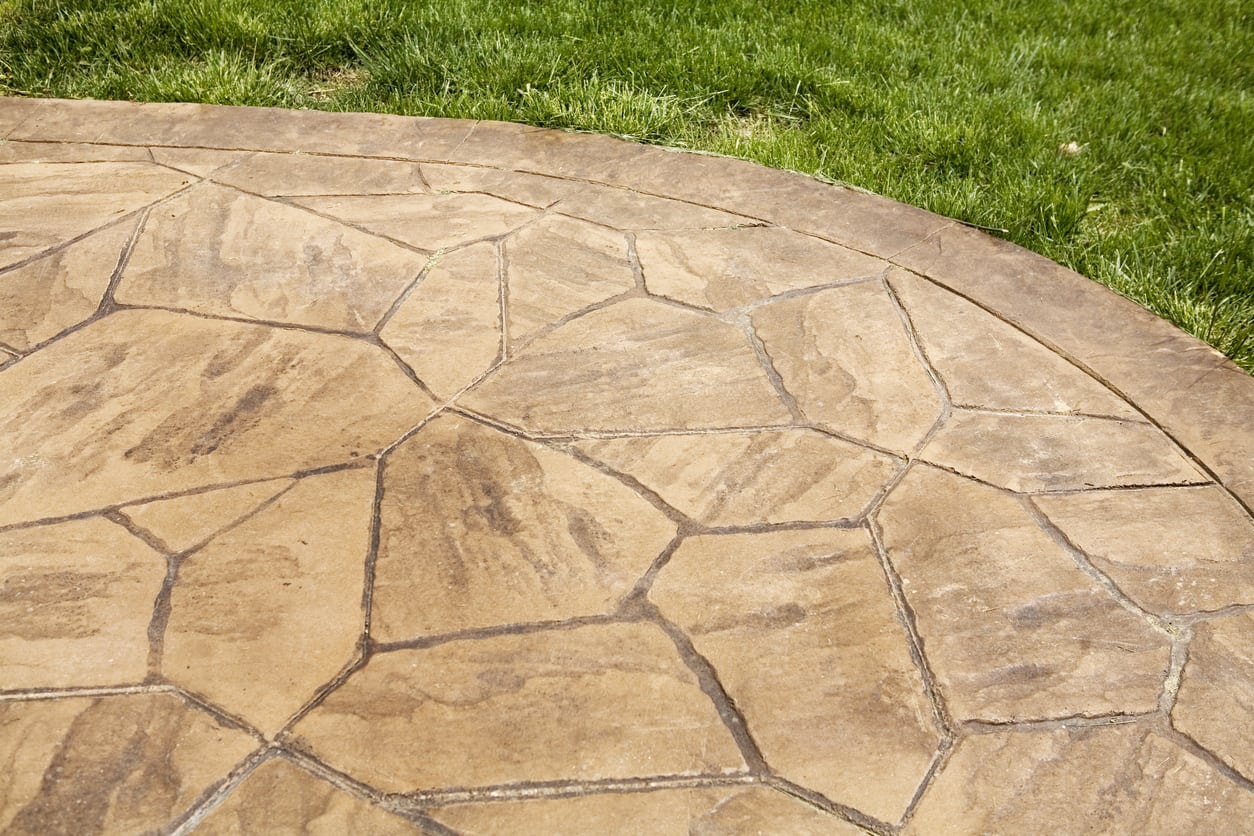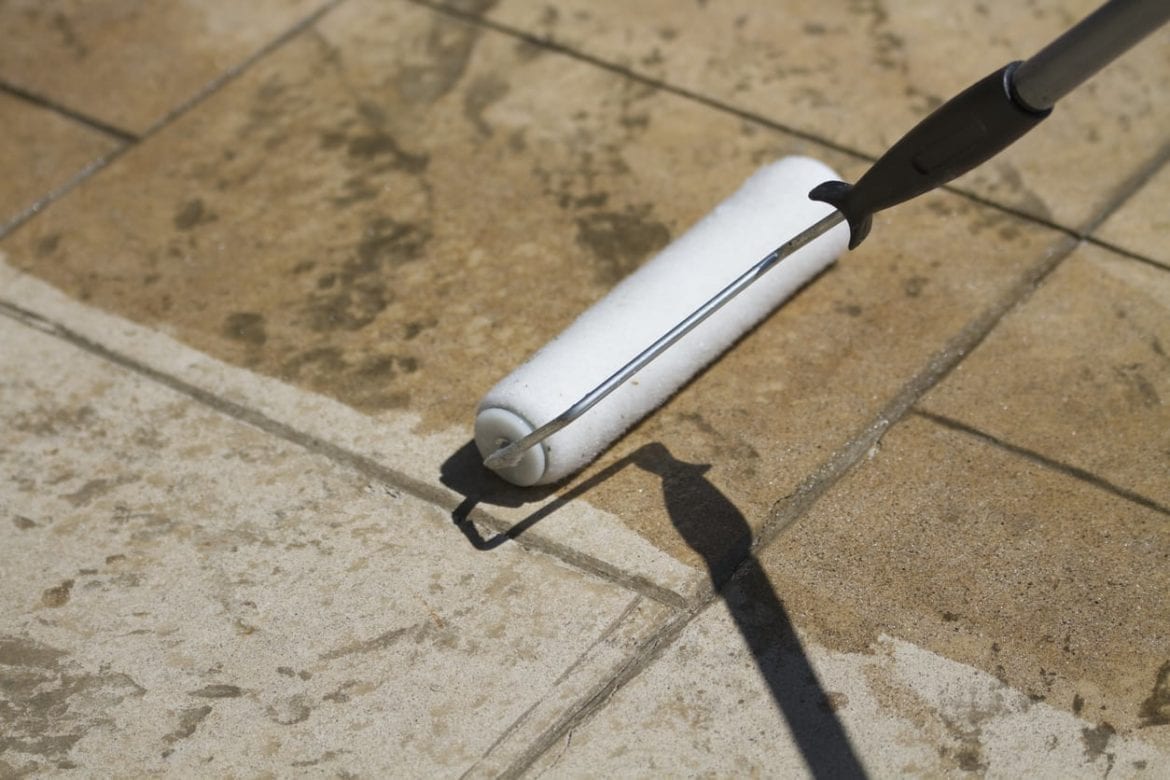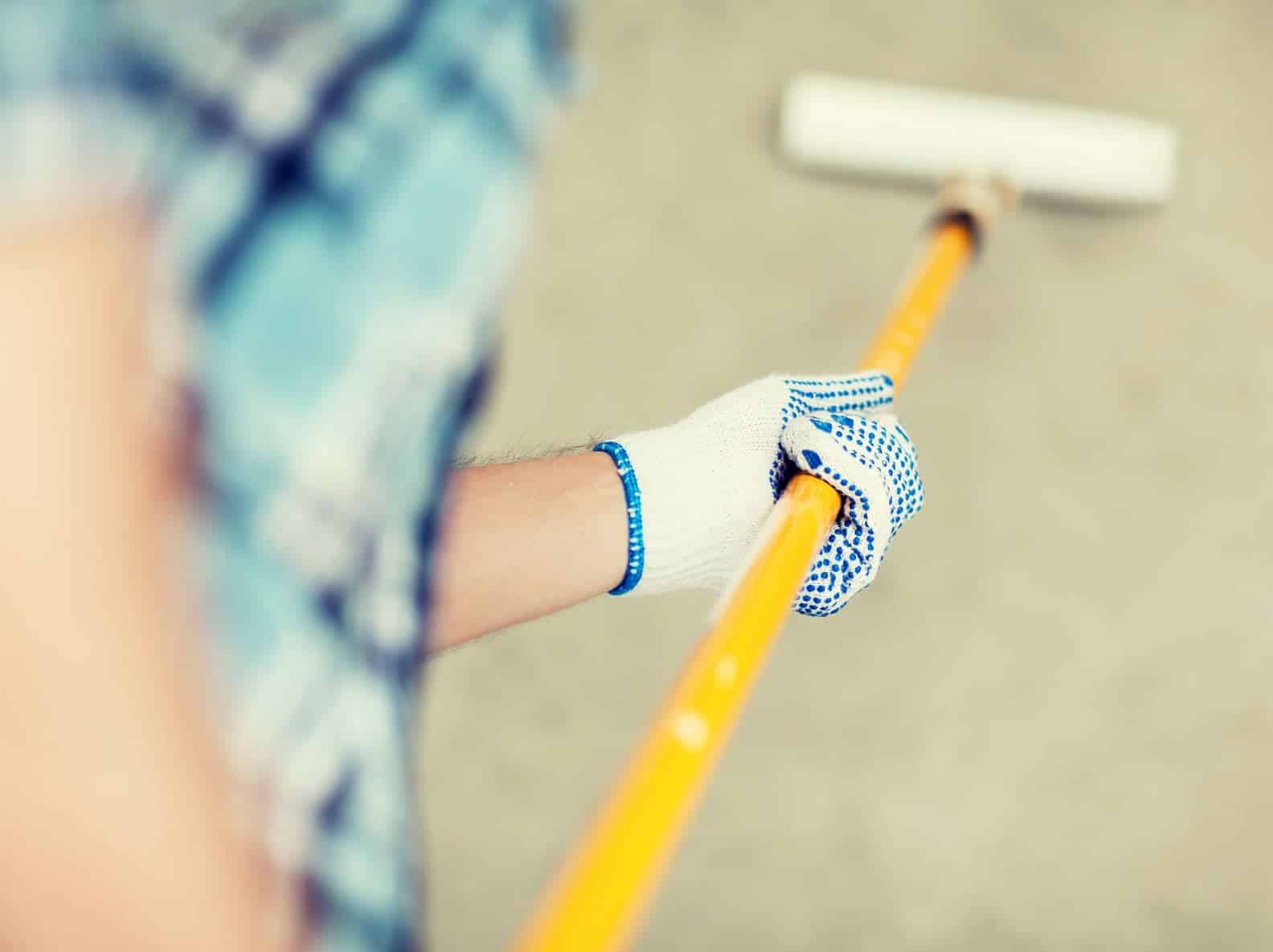One of the most sought after concrete sealing products is a waterproofing sealer that is also able to repel deicing salts. Deicing salts and calcium chlorides are some of the most corrosive elements that concrete can be exposed to. They result in spalling, pitting, cracking and cause the concrete to erode all the way down to the rebar if left untreated. Because concrete has the appearance of being strong and indestructible, sealing it is not something that comes to mind – that is until you have active salt damage. Even if you do not salt your driveway, state and town roads are treated, you drive your car up the driveway into your garage and the salt drips off. Over time the concrete becomes damaged.
It is hard to fix existing salt damage with a sealer; however, it is entirely preventable if a penetrating water repellent with saltguard sealer is used. We review the Ghostshield 8500 product quite frequently on this site because it is one of the products we have used that has had the best, longest lasting results. Backed by a 100 year warranty, if reapplied every 10 years, concrete will remain looking new with out any spalls, pits or cracks. This is extremely important because the cost of replacing an existing concrete pad or driveway is about 14x the cost of the actual sealer itself!
Our Take: The 8500 product is a great option if you have a lot of square footage. The product is available in an ultra concentrated gallon; you take the 1 gallon you purchase and mix it with 4 additional gallons of water. When mixed you are left with a 5 gallon bucket which covers up to 625 sq. ft. (the 625 sq. ft. is for both recommended coats or 1250 sq. ft. for 1 coat). The ready to use version that does not require mixing and can be special ordered through Home Depot and Lowes. Whereas the ultra concentrated version can be ordered through Lowes.
If you have watched HGTV lately you will realize that concrete countertops are trending. Not only do they look amazing when installed but they are so economical in comparison to your typical granite and marble options. What is also trending is feather finish countertops, which is essentially using Ardex or Henry’s Feather Finish concrete mixes and applying them right on top of existing laminate countertops. You can even add pigments to the concrete mixes to make the countertops a color other than gray; we’ve seen white versions, and black versions that look awesome!
Since concrete countertops are extremely porous it is very important to seal them 28 days after the countertops have been cured to prevent staining, scratches and heat damage.
Popular products:
StoneLok E3 2K complete countertop kit includes everything you need to seal 40 sq. ft of concrete countertops. The sealer is applied via a multi-step process, you first apply a surface conditioner, than an epoxy primer and finally a super heat resistant and abrasion resistant polyurethane top coat. One of the most durable products available for use on a concrete countertop if applied correctly. Available in an extra low gloss, low gloss or gloss finish. Does require precise, skilled application and is recommend for use only by trained professionals. The end result is an extremely durable sealer that can resist coffee, wine, citrus, vinegar and Clorox.
If you are looking for a product that doesn’t require such skilled application but will also give excellent abrasion and chemical resistance we recommend the Polyaspartic 745 kit for concrete countertops. Although it has a short pot life (once part A and part B are mixed you must apply it within 20 minutes) it has an extremely fast cure time (24 hours) in comparison to typical epoxy products that need up to a week of cure time. Sold as a countertop kit, you mix part A with part B (already pre-measured) and roll right onto the countertops. Once cured the surface will leave a high gloss finish, acceptable for use on Ardex or Henrys feather finish countertops or regular poured concrete countertops.
As the trees begun to bud and the birds are chirping We are officially welcoming spring! With warmer temperatures and longer days it can mean only one thing – outdoor concrete sealer season has commenced.
With the change of the weather our honey-do lists keep growing. One of the easiest projects you can add to the list is sealing your patio or pool deck. With a plethora of sealing options available on the market – choosing one can seem overwhelming and complicated. But here at Concrete Sealer Reviews, we have tried to make choosing one as painless as possible.
If your patio or pool deck is stamped concrete, nine times out of ten you are going to want to use a high gloss, wet-look sealer to really enhance , darken and bring out the beautiful colors and textures. This finish is typically achieved by using a solvent based acrylic or methyl-methacrylate. Although they are going to have higher VOC’s, (smell or odor during application), they really are the best option to get that decorative look. All that being said if this is the finish you have your heart set on, there is going to be some maintenance involved. Most acrylics need to be reapplied every year to three years depending upon the amount of deicing salt and UV exposure.
If you are not a big fan of the wet look, and are looking for protection without an artificial looking finish, your best bet is going to be a penetrating sealer. Penetrating sealers can range from silicates, siliconates, silanes, siloxanes or blends of these chemistries. For exterior applications, silanes/siloxanes are going to provide the longest lasting protection – especially when exposed to salts, sun, stains and weathering. The water beading or water sheeting effect these sealers boast usually fades after the first few years, but because the active ingredients are able to penetrate into the concrete, protection can last upwards of ten years.
The top concrete sealers for concrete patios are going to be sealers that enhance and beautify the concrete or pavers with out the risk of peeling, flaking or delamination. With patios constant exposure to sun, wind and rain a sealer has to be able to stand up to these afflicting elements. Acrylic sealers are commonly used on exterior decorative surfaces and for good reason. With their finishes ranging from matte, satin and glossy sheens there is a sealer for every aesthetically pleasing application.
Patio sealers are usually available in solvent and water based varieties and it is up to the end use to determine what they are comfortable applying. Although solvent based sealers usually leave a glossier shine they tend to have noxious fumes and high VOCs. Water based acrylics on the other hand have low VOC’s making them easily accessible in all areas of the country.
Our Take: We like water based acrylic sealers because of their low VOCs and subtle matte finish. They will not peel or delaminate like their high gloss counterparts and if it is a high quality acrylic, water will bead from the surface and the sealer will be decorative and repel water. Our favorites include Cryli-Tek 5500 and Decra-Seal WB.

